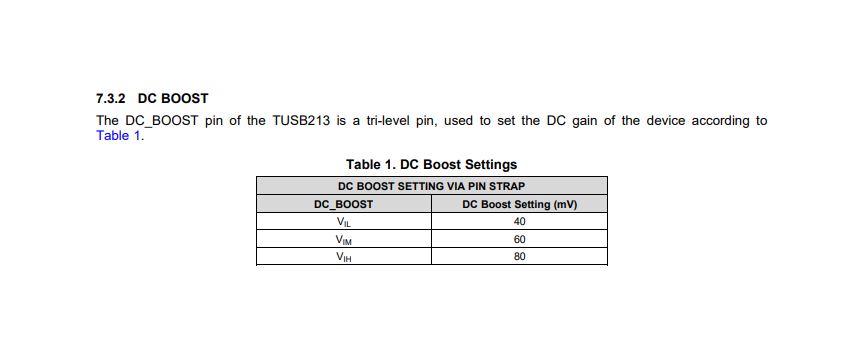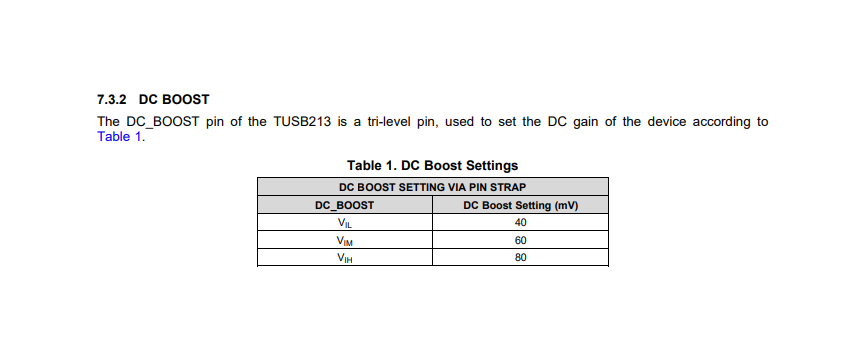Other Parts Discussed in Thread: TUSB213, TUSB217,
Hi Sirs,
Sorry to bother you.
We would like to know
1. What is the voltage set by the AC/DC boost setting parameters for each step?
TUSB213 show as below
2. We set 217 AC: F0 DC: 00 213 AC: 78 DC: 08, why is resevre bit set this way?
3. Continue to point 2, can the 217 set value be applied to 213?
4. Rx SEN function? What value do we want to set?
Datasheet suggest to pull high?




